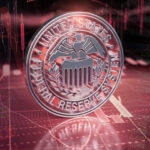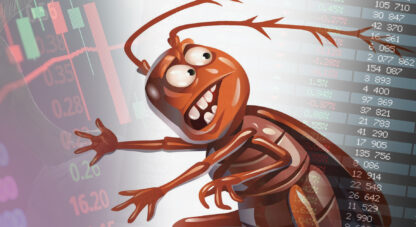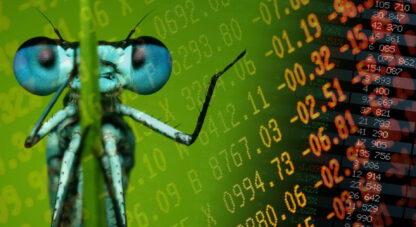Pondering the shallowness of analyses being espoused by the vast majority of market pundits, I’m compelled to frame a thesis to help explain today’s most extraordinary backdrop. The coronavirus outbreak will eventually pass, though I have serious doubts contemporary finance will pass this test. Suggesting history’s greatest Bubble – that is today in serious jeopardy – is still considered crazy talk. Yet this is the reality so few are willing to contemplate. I expected the Russian Bubble to burst in 1998 with serious ramifications for the leveraged speculating community. Still, I was flabbergasted by the reckless leverage employed by Long Term Capital Management (that nearly brought down the global financial system). They were the smart guys (two Nobel laureates).
The Credit Bubble Bulletin was launched in 1999 when I was convinced finance had fundamentally changed – and that this ongoing transformation was appreciated neither by policymakers nor market participants. It was out with bank-dominated lending and in with market-based Credit – securitizations, the government-sponsored enterprises (GSEs), “Wall Street finance,” the “repo” market, derivatives and highly-levered hedge funds. Throughout history, Credit has proved inherently unstable. This new Credit was instability on steroids – spawning serial booms and busts at home and abroad.
I argued for an update to old banking “deposit multiplier” analysis – where one bank creates a deposit as it makes a new loan; with this new money then deposited in a second bank; where bank B then has funds for a new loan (the amount of their new deposit less reserve requirements); where this new money makes its way to Bank C to fund yet another loan (the newest deposit less reserve requirements). For centuries, post-Bubble post-mortem would invariably fault the instability of “fractional reserve banking.” The booms were magical, while the subsequent busts spawned panics and calamitous Bank Runs.
I argued back in 1999 of a dangerous new “infinite multiplier effect” – where contemporary “money” (electronic debits and Credits) moves around the system creating unfettered “money” and Credit expansion and associated Bubbles. This analysis, of course, was fiercely rebuked. It was not until Paul McCulley in 2007 coined the term “shadow banking” that people began taking notice. By then it was too late.
More than a decade ago, I began warning of the risks of an inflating “global government finance Bubble”. Policy makers had resorted to an unprecedented expansion of central bank Credit and sovereign debt to reflate global finance (and economies). And for years policymakers have administered near zero rates and egregious “money printing” operations to sustain history’s greatest Bubble, in the process extending a dangerous cycle. The unprecedented inflation of government finance has been alarming enough. Yet I worry most about this “infinite multiplier effect” and how leveraged speculation infiltrated all nooks and crannies – as well as the very foundation – of global finance.
As I have stated repeatedly over the years, contemporary finance appears miraculous so long as it is expanding/flourishing – so long as new “money”/liquidity is created through the process of financing additional speculative holdings of financial assets. The new securities-related Credit fuels asset inflation, self-reinforcing speculation and more powerful Bubbles. Importantly, credit growth associated with global securities and derivatives speculation expanded to the point of becoming the marginal source of liquidity throughout international financial markets. After first ignoring its ascending role, central banks moved to accommodate, nurture and, finally, to assertively promote financial speculation. The risk today is that this unwieldy Bubble inflated beyond the capacity of central bank control.
Bubbles and resulting manias take on lives of their own. They cannot, however, escape harsh realities: Fragilities only build up over time, and Bubbles don’t work in reverse. Collapse becomes unavoidable, with any serious de-risking/deleveraging dynamic leading to a contraction of marketplace liquidity, a spike in risk premiums, illiquidity, panic and dislocation. It’s the modern form of the old-fashioned Bank Run. That’s where we are today.
I was naive back in the nineties. I actually thought once policymakers understood the instability unleashed by unfettered “money,” Credit and leveraged speculation, they would take responsible steps to contain this new financial structure. They instead fully embraced market-based Credit and speculative finance as a powerful mechanism they could manipulate to stimulate markets and economies. What began with the Federal Reserve took the world by storm. Even as the years passed and the global economy boomed, rates were kept near zero.
In rough terms, balance sheets at the Fed, ECB, BOJ and PBOC each inflated from about one to $5 Trillion. Then came 2019, where aggressive monetary stimulus “insurance” was administered in the face of wildly speculative global securities and derivatives markets. The global Bubble inflated to unimaginable extremes, with fragilities turning only more acute. It is difficult to imagine a more inopportune circumstance for a global pandemic.
I point to the June 2007 collapse of two Bear Stearns structured Credit mutual funds as the beginning of the end for the “mortgage finance Bubble.” But it was the $1 Trillion of subprime CDOs (collateralized debt obligations) in 2006 that sealed the fate for historic financial and economic dislocation. I believe the Fed’s “emergency” 50 bps rate cut in September 2007 – and resulting record stock prices that November – exacerbated underlying fragilities and ensured a more devastating crash.
For the current global Bubble, 2018 was key. Fragilities were exposed, and policymakers attempted to sustain the unsustainable. China belatedly moved in 2018 to rein in egregious Credit excess, leading to faltering growth and heightened financial stress. The deteriorating backdrop hit U.S. markets in 2018’s fourth quarter – and Chairman Powell instigated his dramatic policy “U-turn” on January 4, 2019. Policymakers around the globe followed with aggressive stimulus measures.
Importantly, with its economy faltering, banking system and money market instability escalating, and U.S. trade negotiations struggling, Beijing reversed course and again promoted aggressive fiscal and monetary stimulus. Money market instability hit U.S. shores in September, whereby the Fed restarted QE and rapidly expanded its balance sheet $400 billion. In the end, it was a fateful year of record Chinese and global Credit expansion, record U.S. money supply growth, all-time high stock prices, all-time low sovereign yields, and the thinnest Credit market risk premiums since before the crisis. It was euphoria and near complete disregard for mounting risks.
As far as I’m concerned, the evidence is indisputable: We have been witnesses to history’s greatest – and most precarious – globalized Bubble. If traders want to play for “oversold” bounces and the inevitability of more QE, it’s their money. But Bubbles invariably burst – and there is now a clear and present catalyst. The world is at the cusp of momentous change. Everyone has tried to remain convinced that risk can be ignored, with central bankers having everything under control. Yet the scope of global financial excess, myriad imbalances and structural impairment now dwarfs the capacity of central bankers to sustain market confidence, speculative excess and economic growth.
The Fed Tuesday orchestrated an emergency 50 bps rate cut and the S&P500 sank 2.8%. At this point, rate cuts are not going to cut it. The Fed’s current QE program calls for $60 billion monthly liquidity injections at least through the end of the first half. In the grand scheme of things, it’s a drop in the bucket. If not sooner, I expect the Fed to significantly increase the scope of liquidity operations. Expect more oversubscribed Federal Reserve overnight “repo” auctions, as deleveraging (paying down securities borrowings) destroys liquidity.
If the unfolding de-risking/deleveraging dynamic is as large and systemic as I anticipate, the Fed and global central bank balance sheets are about to commence another major expansion. Markets could very well rally on QE announcements. But akin to QE1 back during the crisis, the additional QE will not provide new marketplace liquidity as much as it will accommodate speculative de-leveraging (holdings shifting from the speculators to central bank balance sheets).
Ten-year Treasury yields collapsed 39 bps this week (15 bps on Friday!) to an unprecedented 0.76%, with a two-week drop of 71 bps. Two-year yields were down 40 bps this week (to 0.51%) and 85 bps over two weeks. This stunning move corroborates the analysis: A faltering historic Bubble will leave the Federal Reserve (and global central bankers) with no alternative other than employing massive and ongoing QE.
For those assuming this is equities bullish, I would offer some caveats. The Fed will be initially hesitant to open the flood gates, one reason being fear of spooking the markets. I could see the FOMC boosting their QE operations to $100 billion monthly at their meeting on the 18th. If, as I suspect, this operation has minimal impact on overall marketplace liquidity, markets will really begin to fret central bank impotence. And I’ll assume the Fed is pressed at some point to raise monthly QE operations to, say, $200 billion. Surly that’s equities positive, most would assume. But even such massive buying will before long be largely matched by ballooning fiscal deficits (and Treasury issuance).
Ominously, the dollar index dropped 2.2% this week, while gold surged 5.6% to $1,674. I recall how the late-nineties “king dollar” morphed into a faltering dollar Bubble. With such global instability, it has been rational for the leveraged speculating community to position for a stronger dollar. And all the speculative flows into U.S. securities markets easily outweighed never-ending U.S. fiscal and Current Account Deficits. Prospects are murky. Fiscal deficits at about 5% of GDP are about to balloon larger. Yield differentials are disappearing before our eyes. And the Fed is about to unleash QE it will have a difficult time controlling. Moreover, the interplay between the coronavirus and politics has the potential to make for remarkably unpredictable November elections.
March 6 – ABC7 News (Julian Glover): “A Santa Clara couple on the Grand Princess Cruise ship to Mexico with a coronavirus-positive man is ill and now getting tested for COVID-19. Leanne and Robert Cummins of Santa Clara were on board the Grand Princess Cruise ship to Mexico that departed on Feb. 11. A man on board that ship was infected with coronavirus and later died… After being notified of the man’s death by the cruise line, Mrs. Leanne Cummins said they started looking to be tested for the virus – especially since they are filling ill… Cummins said her husband has been very ill in recent days with no appetite, trouble breathing, and a fever at one point as high as 103 degrees. …They have been self-quarantining at their Santa Clara home. Mrs. Cummins also said at one point she felt weak and fainted. On Wednesday Cummins said she called the Sutter Health Urgent Care facility in Mountain View looking to be tested for the virus. She was told to go to the emergency room at her local hospital. She reached out to the emergency room at El Camino Hospital in Mountain View which then told her to call her doctor. She said her doctor then told her to go to Santa Clara Valley Medical Center to get tested. She said she called Valley Medical Center and was told that the hospital did not have any test kits and would not be conducting any testing… She was told to call the CDC. On Thursday, Mrs. Cummins said she did exactly that and a CDC representative told her to call the California Department of Public Health. She did and was told to call the Santa Clara County Health Department. She made that call and reached an answering machine. ABC7 News has also tried several times to speak to a public information officer at Santa Clara County Health Department in reference to where someone concerned about exposure to the virus should go for testing and was unsuccessful. After numerous calls a non-public health employee who was assigned to answer phones told ABC7 News that Mrs. Cummins should call her primary care physician back and have the doctor call the public health provider intake line. Again, still no answer as to where the couple should go to get tested.”
Almost 700 passengers and employees of the Diamond Princess were infected with the coronavirus. Now there’s the Grand Princess moored off the coast of San Francisco with 3,500 passengers (21 of 46 tested positive Friday). How many of last week’s departing passengers were infected (at least one death) – and where are they and where have they been? Having learned from the terrible experience in Japan, all passengers are to be tested. But don’t those passengers need to be removed from that ship as quickly as possible?
It’s stunning. Coronavirus cases are up to 6,800 in South Korea, 4,800 in Iran, 4,600 in Italy, 670 in Germany, 650 in France, 420 in Japan, 400 in Spain and 330 in the U.S. The pandemic is here. Now it is only a matter of the scope of the unfolding disaster.
The outbreak appears to have somewhat stabilized in China, and the Chinese economy is trying to get back to work. I have serious doubts that China’s Bubble economy can be so easily reflated. As an indicator of global economic prospects, crude oil (WTI) sank 7.8% (“worst drop since 2008”) this week to $41.28.
With the energy sector under pressure, U.S. high-yield Credit default swap prices surged 73 bps this week. After trading near multi-year lows at 280 bps on February 12th, high-yield CDS closed today at 443 bps – the high since (Powell U-turn) January 4th, 2019. Investment-grade CDS jumped 17 bps this week to a 14-month high 83 bps. The big financial institutions saw their CDS prices surge. Goldman Sachs CDS jumped 20 this week to 91 bps (14-month high). JPMorgan CDS rose seven to 60 bps (14-month high). Financial conditions are tightening dramatically.
The torrential rain has begun, and all those that have been making such easy money selling flood insurance have begun to panic. And I don’t think the prospect for zero rates and massive QE is about to instill calm and confidence. Indeed, the entire notion of open-ended QE and fiscal deficits creates acute market uncertainty. How does this melt-up in Treasury prices impact “carry trade” speculation in corporate Credit? Could dollar prospects (and currency market stability) be murkier in such a policy backdrop? How does such uncertainty play for global leveraged speculation? It is difficult to envisage a scenario where myriad global risks (i.e. coronavirus, financial, economic, policy, geopolitical) don’t incite a momentous de-risking/deleveraging dynamic. The odds of the dreadful global “seizing up” scenario are rising. The Modern-Day Bank Run.
For the Week:
In an alarmingly volatile week, the S&P500 recovered 0.6% (down 8.0% y-t-d) and the Dow rallied 1.8% (down 9.4%). The Utilities surged 8.3% (up 4.3%). The Banks sank 8.4% (down 26.0%), and the Broker/Dealers fell 4.9% (down 12.8%). The Transports lost 4.6% (down 17.8%). The S&P 400 Midcaps declined 0.9% (down 12.9%), and the small cap Russell 2000 dropped 1.8% (down 13.1%). The Nasdaq100 rallied 0.8% (down 2.3%). The Semiconductors slipped 0.3% (down 8.1%). The Biotechs increased 0.4% (down 3.1%). With bullion surging $88, the HUI gold index rallied 11.5% (down 0.7%).
Three-month Treasury bill rates ended the week at 0.4425%. Two-year government yields collapsed 40 bps to 0.51% (down 106bps y-t-d). Five-year T-note yields fell 33 bps to 0.61% (down 108bps). Ten-year Treasury yields sank 39 bps to 0.76% (down 115bps). Long bond yields collapsed 39 bps to 1.29% (down 110bps). Benchmark Fannie Mae MBS yields fell 29 bps to 1.89% (down 82bps).
Greek 10-year yields jumped 10 bps to 1.39% (down 4bps y-t-d). Ten-year Portuguese yields declined five bps to 0.30% (down 14bps). Italian 10-year yields fell seven bps to 1.07% (down 34bps). Spain’s 10-year yields declined seven bps to 0.21% (down 25bps). German bund yields sank 10 bps to negative 0.71% (down 53bps). French yields declined six bps to negative 0.34% (down 46bps). The French to German 10-year bond spread widened four to 37 bps. U.K. 10-year gilt yields sank 21 bps to 0.24% (down 59bps). U.K.’s FTSE equities index dropped 1.8% (down 14.3%).
Japan’s Nikkei Equities Index fell 1.9% (down 12.3% y-t-d). Japanese 10-year “JGB” yields rose three bps to negative 0.12% (down 11bps y-t-d). France’s CAC40 dropped 3.2% (down 14.0%). The German DAX equities index lost 2.9% (down 12.9%). Spain’s IBEX 35 equities index sank 4.0% (down 12.3%). Italy’s FTSE MIB index was hit 5.4% (down 11.5%). EM equities were mostly lower. Brazil’s Bovespa index sank 5.9% (down 15.3%), while Mexico’s Bolsa recovered 0.2% (down 5.0%). South Korea’s Kospi index rallied 2.7% (down 7.2%). India’s Sensex equities index slumped 1.9% (down 8.9%). China’s Shanghai Exchange surged 5.4% (down 0.5%). Turkey’s Borsa Istanbul National 100 index recovered 3.4% (down 4.2%). Russia’s MICEX equities index fell 2.4% (down 10.7%).
Investment-grade bond funds saw outflows of $4.786 billion, and junk bond funds posted outflows of $5.126 billion (from Lipper).
Freddie Mac 30-year fixed mortgage rates sank 16 bps to 3.29% (down 112bps y-o-y). Fifteen-year rates fell 16 bps to 2.79% (down 104bps). Five-year hybrid ARM rates dipped two bps to 3.18% (down 69bps). Bankrate’s survey of jumbo mortgage borrowing costs had 30-year fixed rates up eight bps to 3.78% (down 57bps).
Federal Reserve Credit last week jumped $24.9bn to $4.144 TN, with a 25-week gain of $418 billion. Over the past year, Fed Credit expanded $215bn, or 5.5%. Fed Credit inflated $1.309 Trillion, or 47%, over the past 382 weeks. Elsewhere, Fed holdings for foreign owners of Treasury, Agency Debt declined $2.7 billion last week to $3.458 TN. “Custody holdings” were down $8.3bn, or 0.2%, y-o-y.
M2 (narrow) “money” supply added $2.6bn last week to a record $15.534 TN. “Narrow money” surged $1.071 TN, or 7.4%, over the past year. For the week, Currency increased $0.2bn. Total Checkable Deposits declined $11.3bn, while Savings Deposits rose $15.3bn. Small Time Deposits dipped $3.0bn. Retail Money Funds added $1.5bn.
Total money market fund assets surged $49.3bn to $3.683 TN, with institutional money fund assets gaining $15.1bn to $2.271TN. Total money funds jumped $571bn y-o-y, or 18.3%.
Total Commercial Paper declined $5.1bn to $1.124 TN. CP was up $57bn, or 5.3% year-over-year.
Currency Watch:
For the week, the U.S. dollar index declined 2.2% to 95.951 (down 0.6% y-t-d). For the week on the upside, the Swiss franc increased 2.8%, the Japanese yen 2.4%, the euro 2.3%, the Swedish krona 2.2%, the South Korean won 1.9%, the Australian dollar 1.9%, the British pound 1.8%, the New Zealand dollar 1.7%, the Norwegian krone 1.4%, and the Singapore dollar 1.1%. For the week on the downside, the Brazilian real declined 3.4%, the Mexican peso 2.3%, the South African rand 0.1% and the Canadian dollar 0.1%. The Chinese renminbi increased 0.87% versus the dollar this week (up 0.46% y-t-d).
Commodities Watch:
March 3 – Bloomberg (Elena Mazneva and Ranjeetha Pakiam): “Investors are returning to gold as a store of value after the Federal Reserve’s emergency rate cut sparked a collapse in 10-year Treasury yields. Spot gold extended gains Wednesday after jumping by the most since 2016. The metal is rebounding from a dramatic plunge on Friday, when investors sold bullion to cover losses in other asset classes. ‘Gold rekindled its safe haven credentials yesterday after the Fed made the cut,’ said Ole Hansen, head of commodity strategy at Saxo Bank…”
March 4 – New York Times (Stanley Reed and Clifford Krauss): “A 20% plunge in oil prices this year since the coronavirus outbreak took hold has alarmed the world’s top oil officials, and their challenge to prop up prices keeps getting harder. Leaders from the OPEC nations and Russia are gathered in Vienna this week to halt the slide, with high stakes and few good options. Russia, so far, is resisting production cuts aimed at stabilizing prices. IHS Markit, a research firm, estimated that demand for oil would fall by 3.8 million barrels a day, or about 4% of world supplies, over the first three months of this year — the largest quarterly drop in demand the researchers had ever seen, exceeding declines during the 2008 financial crisis.”
The Bloomberg Commodities Index slipped 0.3% (down 12.5% y-t-d). Spot Gold rallied 5.6% to $1,674 (up 10.3%). Silver jumped 4.9% to $17.263. (down 3.7%). WTI crude sank $3.48 to $41.28 (down 32%). Gasoline slumped 6.3% (down 18%), while Natural Gas recovered 1.4% (down 22%). Copper gained 0.8% (down 9%). Wheat lost 1.8% (down 8%). Corn recovered 2.1% (down 3%).
Coronavirus Watch:
March 3 – CNBC (Jeff Cox): “Officials of most of the world’s largest economies pledged on Tuesday a united front in the battle against the novel coronavirus scare but offered no specific actions. ‘Given the potential impacts of COVID-19 on global growth, we reaffirm our commitment to use all appropriate policy tools to achieve strong, sustainable growth and safeguard against downside risks,’ the G-7 statement said. U.S. Treasury Secretary Steven Mnuchin and Federal Reserve Chairman Jerome Powell led a conference call with finance ministers and central bank leaders from each of the nations. Various other officials participated, including Haruhiko Kuroda, the governor of the Bank of Japan.”
March 3 – Financial Times (Najmeh Bozorgmehr): “In less than two weeks the number of confirmed cases of coronavirus in Iran has jumped from two to more than 2,300, shaking public trust in the Iranian regime’s capacity to contain the disease and exacerbating the country’s economic isolation. After claiming the outbreak was under control a week ago, the number of officially reported cases has doubled almost daily and at least 77 people have now died… Iran’s elite military unit, the Islamic Revolutionary Guard, has said its hospitals will now be dedicated to admitting coronavirus patients and that they are ready to set up makeshift facilities with a further 8,000 beds. But medical professionals fear this is too little too late and that the delayed response has already enabled the virus to spread unchecked.”
March 4 – Reuters (Josh Smith, Sangmi Cha, and Jack Kim): “South Korea reported hundreds of new coronavirus cases on Wednesday as many sick people waited for hospital beds in Daegu, the city at the center of the worst outbreak outside China. The new cases bring South Korea’s total to 5,621, with at least 32 deaths…”
March 4 – Reuters (Babak Dehghanpisheh, Nafisa Eltahir, Alaa Swilam, and Alexander Cornwell): “Coronavirus has spread to almost all of Iran’s provinces but the country will get through the outbreak with a ‘minimum’ number of deaths, President Hassan Rouhani said… ‘This disease is a widespread disease,’ he said… ‘It has reached almost all our provinces and in one sense it’s a global disease.’”
March 4 – Reuters: “The Italian government has decided to close schools and universities across the country until mid-March in a further attempt to contain the worst coronavirus outbreak in Europe, Ansa news agency reported…”
March 2 – Reuters (Steve Gorman): “Seattle-area health officials confronting the nation’s first community coronavirus outbreak are planning new containment measures, ranging from possible school closings to temporary quarantine housing for mildly ill homeless patients.”
Market Instability Watch:
March 3 – Wall Street Journal (Joe Wallace): “The coronavirus epidemic has delivered a jolt to previously sleepy foreign-exchange markets. Currency trading had mostly been calm in recent years, as a degree of certainty about the outlook for U.S. interest rates and other factors, such as the low cost of insurance against major foreign-exchange moves, suppressed volatility. The fast-spreading virus has interrupted that equability. The Cboe/CME FX Euro Volatility Index, a measure of expected turbulence in the dollar-euro futures market derived from options prices, has surged 21% over the past week, extending this year’s advance to 44%.”
March 4 – Bloomberg (Sarah Ponczek and Vildana Hajric): “Anyone trying to stay ahead of equity markets these days should probably consider giving up. The up-and-down lurches rank with any in market history. Not since the week after S&P lowered the U.S. credit rating has there been a stretch like this, including Tuesday’s almost 5% swing in the Dow Jones Industrial Average. In eight trading sessions, three have seen the S&P 500 close up or down 4%, and two more have brought 3% sell-offs. ‘People are piling in,’ said Charlie Smith, founding partner and chief investment officer at Fort Pitt Capital Group… ‘Any time you get a move of more than 1.5%, to me that’s an indication that you have not only momentum players but also the algorithmic, the machine-driven trades dominating the action.’”
March 2 – Bloomberg (Katherine Greifeld): “The massive exodus from junk-bond ETFs amid the coronavirus outbreak has spread to the top-rated debt market. Investors pulled a record $2.02 billion from BlackRock Inc.’s iShares iBoxx $ Investment Grade Corporate Bond ETF, ticker LQD, in five days through Friday…”
March 3 – Financial Times (Mohamed El-Erian): “Sudden sell-offs in markets have a nasty way of exposing vulnerabilities that take on a disruptive life of their own, and risk amplifying the initial shock through a self-feeding cycle. It is important to remember, in this context, the large amount of US investment-grade corporate debt that hangs over the high-yield market like a Damoclean sword. Much of it is now facing a considerably higher risk of downgrade, given the inevitable global economic slowdown caused by coronavirus. The greater the movement down to junk status, the higher the risk of a waterfall of funding dislocations that makes everything worse, financially and economically.”
March 2 – Wall Street Journal (Patricia Kowsmann): “European banks have long been considered one of the weaker links in the global financial system. The coronavirus outbreak on the continent poses a fresh test of their health. Shares in European banks have been among the worst hit since the virus began to spread, first through Italy, and now through much of the rest of the region… Shares of UniCredit SpA and Intesa Sanpaolo SpA, both based in Milan, the epicenter of the virus outbreak in Europe, were down more than 6% and 5% respectively just after midday. UniCredit, which has reported the first case of coronavirus among its staff, is down more than 17% so far this year.”
China Watch:
February 29 – Reuters (Stella Qiu, Lusha Zhang and Ryan Woo): “Factory activity in China contracted at the fastest pace ever in February, even worse than during the global financial crisis, highlighting the colossal damage from the coronavirus outbreak on the world’s second-largest economy. China’s official Purchasing Managers’ Index (PMI) fell to a record low of 35.7 in February from 50.0 in January…”
March 4 – Bloomberg: “China’s car sales had the biggest monthly plunge on record as the coronavirus kept shoppers away, intensifying the pressure on automakers already battling an unprecedented slump before the outbreak. Sales fell 80% in February, according to… the China Passenger Car Association… Average daily sales improved toward the end of the month compared with the first three weeks, PCA said.”
March 3 – Financial Times (Sun Yu): “Li Zhenguo is trying hard to return to work after spending five weeks at home in Zhumiao, a village in the central Henan Province. But there is no public transport between Zhumiao and the nearest city of Zhumadian. From there Mr Li, 51, could hop on a high-speed train bound for the southern Guangdong province where he works as an assembler for a battery factory. Even if he somehow could make it to the railway station, though, he would not be able to afford the train ticket. The high-speed train costs more than three times the regular service, which has not operated since January. ‘I can’t go anywhere until traffic returns to normal,’ said Mr Li. Tens of millions of Chinese migrant workers, mostly from the under-developed hinterland, are also stranded.”
March 3 – Wall Street Journal (Frances Yoon and Stella Yifan Xie): “Even as home sales in China have dried up because of the coronavirus epidemic, international bond investors are keeping faith with major real-estate groups. The resilience of Chinese property debt contrasts with a steep decline in business, as developers have been forced to close sales centers across the country, and with a slide in property shares signaling that the sector’s earnings are likely to suffer. In a Feb. 26 note, Goldman Sachs analysts said recent property-sales volume across 30 major cities was barely a quarter of the seasonal norm. Heavyweight China Evergrande Group, the country’s most indebted developer, has moved to drum up business with promotions such as offering steep discounts for residential-property purchases made online.”
March 6 – Bloomberg: “The troubled business arm of a top Chinese university has defaulted on a $310 million offshore bond, after entering a court-led debt restructuring and following a recent repayment failure on a local note. Peking University Founder Group Corp. failed to pay the coupon on the dollar bond due 2021, which has triggered a cross-default on another offshore note…”
March 4 – Wall Street Journal (Zhou Wei and Serena Ng): “The coronavirus epidemic has sparked a bond bonanza in China, with financial institutions and companies rushing to sell debt at low interest rates. Since early February, more than 150 Chinese companies, including manufacturers, airlines and property developers, have collectively raised more than 237 billion yuan ($34bn) by selling so-called coronavirus bonds, which devote a portion of their proceeds to ‘epidemic prevention and control’ efforts within the country. The pace of issuance has picked up as more companies have found they can borrow money cheaply this way.”
March 1 – New York Times (Paul Mozur, Raymond Zhong and Aaron Krolik): “As China encourages people to return to work despite the coronavirus outbreak, it has begun a bold mass experiment in using data to regulate citizens’ lives — by requiring them to use software on their smartphones that dictates whether they should be quarantined or allowed into subways, malls and other public spaces. But a New York Times analysis of the software’s code found that the system does more than decide in real time whether someone poses a contagion risk. It also appears to share information with the police, setting a template for new forms of automated social control that could persist long after the epidemic subsides.”
Global Bubble Watch:
March 3 – Financial Times (John Plender): “The shock that coronavirus has wrought on markets across the world coincides with a dangerous financial backdrop marked by spiralling global debt. According to the Institute of International Finance…, the ratio of global debt to gross domestic product hit an all-time high of over 322% in the third quarter of 2019, with total debt reaching close to $253tn. The implication, if the virus continues to spread, is that any fragilities in the financial system have the potential to trigger a new debt crisis. In the short term the behaviour of credit markets will be critical.”
March 2 – Bloomberg (William Horobin): “The upheaval from the coronavirus outbreak may be the final jolt that the world’s biggest companies need to reevaluate how they operate in a globalized economy, the OECD’s chief economist Laurence Boone said. The sprawling, continent-crossing supply chains of corporations have already come under pressure from trade tensions and climate concerns, and may face further stress as countries change global taxation rules. If and when the dust settles from the coronavirus, Boone said firms will likely pause to reconsider what they do.”
March 1 – Wall Street Journal (Thomas Gryta and Russell Adams): “Companies have endured financial meltdowns, civil wars and natural disasters. Now they are confronting a different kind of menace: a fast-spreading virus that has abruptly dented demand and supply across industries and continents. The novel coronavirus… has swept through Asia and Europe, disrupted global travel and hobbled supply chains that churn out everything from smartphones to pharmaceuticals. In days, it went from pockets of woe to the top concern of chief executives world-wide. Conferences are getting canceled, from the CERAWeek energy conference in Houston to Facebook Inc.’s F8 developer gathering in California. Disneyland Tokyo is closed. Auto suppliers are warning of parts shortages. Generic drug manufacturers are paying 50% more for some raw materials.”
March 3 – Financial Times (John Reed and Stefania Palma): “The street market in Ubud, Bali was unusually quiet on a recent afternoon. ‘At this time of day, Chinese tourists would normally be crowding through here,’ said Ketut, who sells bags and wooden crafts to tourists. His sales have halved since the coronavirus outbreak began in January. The loss of the China trade has hit south-east Asian economies particularly hard, as tourist groups pull out, Chinese suppliers halt deliveries to manufacturers and imports of everything from Thai and Malaysian electronic equipment to Vietnamese dragon fruit grind to a halt. The crisis has laid bare just how dependent these countries are on the world’s second-largest economy, a top trading partner and source of foreign visitors for countries across the region.”
March 5 – Bloomberg (Iain Marlow, Karlis Salna, Anusha Ondaatjie and Dandan Li): “Xi Jinping’s Belt and Road Initiative has long been seen as a way to project China’s influence around the world. Now, the coronavirus is showing how the trade and infrastructure program can help export the country’s troubles. The deadly outbreak is prompting delays and disruptions to China’s construction and investment plans overseas, risking years of planning and hundreds of billions of dollars in economic diplomacy. Quarantine measures are preventing Chinese workers from making it to foreign building sites, domestic firms supplying overseas projects face acute labor shortages and fears are mounting that workers will inadvertently spread the virus to new locales.”
March 1 – Reuters (Jonathan Cable and Leika Kihara): “Global factories took a beating in February from the coronavirus outbreak, with activity in China shrinking at a record pace, surveys showed on Monday, raising the prospect of a coordinated policy response by central banks to prevent a global recession.”
March 2 – Financial Times (Kaye Wiggins): “As stock markets suffered their worst week since 2008, and companies rushed to cancel events and reduce travel, there was one part of the economy that it seemed even coronavirus could not stop: private equity. Thousands of dealmakers and investors, including industry titans such as Blackstone Group’s Steve Schwarzman and Carlyle Group’s David Rubenstein, spent last week at the SuperReturn conference in Berlin. The mood at the industry’s annual get-together was buoyant — even as similar events… were cancelled amid virus fears. Attendees dashed between suites turned into makeshift meeting rooms at the InterContinental Hotel, sat in packed halls for panel sessions, and then headed to the city’s top restaurants. There was a crowded karaoke night on Thursday; but the hottest ticket in town was Wednesday’s party in a train station-turned-event-space where R&B singer Usher and magician David Blaine performed.”
March 1 – Bloomberg (Peter Vercoe): “Australia’s housing boom is back in full swing with prices in Melbourne reaching a record high, and Sydney not far behind. Property values in the eight state and territory capitals surged 1.2% last month, according to CoreLogic… The upswing in prices, which started mid-2019, has already recouped most of the losses of a near two-year swoon as record-low interest rates and looser borrowing standards sent buyers flocking back to the market.”
Trump Administration Watch:
March 4 – Bloomberg (Jennifer Jacobs): “President Donald Trump blamed his predecessor Barack Obama for a nationwide shortage of test kits for the novel coronavirus, saying he had ended regulations limiting the development of the diagnostic tools. ‘The Obama administration made a decision on testing that turned out to be very detrimental to what we’re doing and we undid that decision a few days ago so that the testing can take place in a much more accurate and rapid fashion,’ Trump said… He added: ‘That was a decision we disagreed with — I don’t think we would have made it — but for some reason it was made but we’ve undone that decision.’”
March 2 – Bloomberg (Nick Wadhams): “The Trump administration ordered four Chinese state-owned news outlets to slash the number of staff they have working in the U.S., part of a broader response to Beijing’s restrictions on American journalists including its expulsion of three Wall Street Journal reporters last month. The move risks further tit-for-tat measures from Beijing as the world’s biggest economies continue a broader battle for global influence even after reaching a phase-one trade deal earlier this year. That wider strategic fight is affecting everything from manufacturing supply chains to 5G mobile-phone technology to the leadership of international organizations.”
Federal Reserve Watch:
March 3 – Reuters (Noel Randewich): “Wall Street tumbled in a volatile session on Tuesday after the U.S. Federal Reserve surprised investors with a half percentage-point cut in interest rates, amplifying fears about the magnitude of the coronavirus’ impact on the economy. All three major U.S. stock market indexes closed nearly 3% lower after the Fed’s first emergency rate cut since the 2008 financial crisis.”
March 3 – CNBC (Yelena Dzhanova): “President Donald Trump on Tuesday demanded that the Federal Reserve cut rates even more after the central bank announced it would slash rates by 50 bps in an effort to combat the economic impact of the coronavirus outbreak. The Fed ‘must further ease and, most importantly, come into line with other countries/competitors,’ Trump tweeted. ‘We are not playing on a level field. Not fair to USA. It is finally time for the Federal Reserve to LEAD. More easing and cutting!’”
March 3 – Associated Press (Christopher Rugaber): “Jerome Powell is confronting his stiffest test yet as head of the Federal Reserve in an atmosphere vastly altered from what his predecessors faced. It makes an uncertain situation even more challenging. On Tuesday, Powell announced a surprise half-point interest rate cut that shrank the Fed’s key rate to a range of just 1% to 1.25%. It marked the first time the central bank has cut rates between scheduled policy meetings since the 2008 financial crisis. And it’s the steepest rate cut the Fed has made since then. The Fed’s unusual move was a response to economic fears and dizzying stock market plunges that are unnervingly reminiscent of the crisis that nearly toppled the financial system in 2008. Yet the circumstances are radically different. For one thing, the uncertainty about the impact of the virus — How bad will it get? How long will it last? — makes it particularly difficult to devise a solution.”
March 6 – Bloomberg (Steve Matthews): “Federal Reserve Bank of Kansas City President Esther George said the central bank’s past expansion of its balance sheet, or quantitative easing, raises concerns about financial stability and that potential costs often aren’t well understood. ‘While the use of negative interest rates gives me pause as a way to address a future encounter with the effective lower bound,’ George said, ‘concerns about the potential side effects of balance sheet policies that pose risks to financial stability and threaten the central bank’s policy independence.’ Though convention wisdom is that the benefits of asset purchases are obvious, ’it remains less than clear to me that the longer-run costs of balance sheet policies have been fully taken into account,’ she said…”
March 4 – Financial Times (Brendan Greeley, Colby Smith and Jennifer Ablan): “When the Fed and markets move together it is difficult to figure out who is watching whom — former Fed chair Ben Bernanke called it the ‘hall of mirrors’ problem. Giving investors what they want is precisely what the Fed seemed to be doing on Tuesday, when it announced its first emergency rate cut since the height of the financial crisis. But in a hastily assembled news conference, Fed chair Jay Powell laid out a simple justification for its actions. He suggested that when there is great uncertainty and no historical precedent for what is about to happen, the best thing is to do whatever you can — even if you do not have great tools for the job. As the number of coronavirus cases in the US passed 100, Mr Powell indicated he had no other choice. But he was forthright about what he did not know.”
March 3 – CNBC (Jesse Pound): “Former Morgan Stanley Asia Chairman Stephen Roach said the Federal Reserve is not equipped to help the economy during the coronavirus outbreak. ‘Central banks are pulling out a playbook that was designed to deal with financial problems and not to deal with public health problems,’ Roach said… ‘So I really think they’re like a fish out of the water here. They have no idea how to contain or even to understand what may be about to happen in the public health area or the U.S. economy’s response to that.’”
March 4 – CNBC (Jeff Cox): “The U.S. economy continues to move forward but faces risks from both the presidential election and the feared spread of the novel coronavirus, the Federal Reserve reported… In the central bank’s periodic ‘Beige Book’ report from its member districts, officials saw activity growing at a ‘modest to moderate pace.’ Threats from the coronavirus specifically did not seem to pose a major threat yet, though business contacts said they were worried about potential ramifications to come.”
U.S. Bubble Watch:
March 3 – Reuters (Swati Pandey): “A rapidly spreading coronavirus outbreak will likely be a ‘material headwind’ for the U.S. economy with the hit expected to be longer and deeper than previously anticipated, S&P Global Ratings said… as it cut its growth forecast. The epidemic is plunging the world economy into its worst downturn since the global financial crisis more than 10 years ago, the Organisation for Economic Cooperation and Development warned on Monday, urging governments and central banks to fight back to avoid an even steeper slump.”
March 6 – Bloomberg (Sophie Caronello): “The U.S. labor market continues to chug along, despite an ongoing threat from the spread of the coronavirus. Employers added a stronger-than-expected 273,000 workers in February, matching the previous month’s revised gain, according to a Labor Department report… The unemployment rate fell back to a half-century low of 3.5%, while average hourly earnings advanced a steady 3% from a year earlier.”
March 2 – CNBC (Fred Imbert): “Manufacturing activity in the U.S. grew at a slower-than-expected pace last month as the coronavirus outbreak dampened sentiment in the sector, data from the Institute for Supply Management showed. The ISM manufacturing Purchasing Manager’s Index fell to 50.1 in February from 50.9 in January. That’s the PMI’s lowest level since late 2019…”
February 29 – Wall Street Journal (Rebecca Elliott and Collin Eaton): “Shale drillers were already braced for a tough year. Now the new coronavirus is putting them under even greater financial pressure. Exploration and production companies are straining to slow growth—amid an oversupply of oil and gas—and cut spending to appease investors angry over poor returns. Now the virus has further weakened global demand for their products, posing a greater challenge to a sector where many companies are saddled with debt.”
March 3 – Wall Street Journal (Heather Gillers): “Christopher Clark was elected mayor last year, pledging to seek business tax reductions and lower water bills. They were popular goals that seemed in reach given that city revenues had been rising almost every year since the recession. On taking office, Mr. Clark quickly figured out the city’s progress had stalled. Property tax collections were down, and businesses were cutting jobs. A fall in city revenue, coupled with growing debt payments, meant there would be no relief from business taxes or water bills… A decade of growth in the U.S. economy allowed cities to patch fiscal holes left by the financial crisis and recession. A surprising number now see new signs of trouble. The proportion of American cities expecting general-fund revenue to drop more than 3% when the books close on the 2019 fiscal year increased to 27% from 17% in fiscal 2018…”
March 2 – Bloomberg (Rob Urban, Prashant Gopal, and Nic Querolo): “Eric Marrus, a real estate broker at Compass in New York, walked through a $7.5 million townhouse in Manhattan’s Lenox Hill neighborhood last week, pointing his phone into every corner of the property. He was conducting a virtual tour via WhatsApp for a Chinese couple unable to visit the home together because of coronavirus travel restrictions. ‘Logistically, it’s a nightmare,’ said Marrus, who gets about a quarter of his business from China… As the outbreak spreads, snarling travel across the world, real estate markets in the U.S. and other countries that rely on Chinese buyers face a looming crisis as deals languish and potential purchases are delayed indefinitely. Chinese buyers spent $13.4 billion on U.S. homes in 2019… In California, where 34% of foreign purchases were from China last year, Keller Williams broker associate Coco Tan has taken to wearing a surgical mask to open houses…”
March 4 – CNBC (Diana Olick): “A sharp drop in mortgage interest rates had borrowers rushing to their lenders last week… The average contract interest rate for 30-year fixed-rate mortgages with conforming loan balances ($510,400 or less) decreased to 3.57% from 3.73%… Rates are even lower now. One year ago, the average rate was 4.67%, 110 bps higher. That drop caused a 26% surge in weekly refinance applications. Compared with one year ago, refinance volume was nearly 224% higher.”
March 4 – Bloomberg (Shahien Nasiripour and Prashant Gopal): “A drop in interest rates in response to the coronavirus outbreak is adding urgency to a hiring spree across the mortgage industry. Executives at four of the nation’s 15 biggest mortgage lenders, already gearing up for a busy 2020, anticipate hiring thousands of employees this year to keep up with what they expect to be a flood of demand… Lenders are zipping through applications so fast that some expect to blow past origination records they set just last year.”
Fixed-Income Bubble Watch:
March 3 – Reuters (Yoruk Bahceli and Kate Duguid): “Companies took advantage of a window of opportunity on Tuesday to launch debt sales on both sides of the Atlantic, after coronavirus concerns chilled deal markets last week. Some worried the chance could be a fleeting one, after risk appetite appeared to sour as stocks and bond yields fell on the heels of Tuesday’s emergency rate cut by the Federal Reserve.”
Central Bank Watch:
March 5 – Bloomberg (Piotr Skolimowski): “A coordinated interest-rate cut this week could have induced panic and wasn’t warranted, former European Central Bank President Jean-Claude Trichet said. The Frenchman, who led the euro-zone institution during the 2008 financial crisis and participated in joint easing with the U.S. Federal Reserve after the collapse of Lehman Brothers, suggested in a Bloomberg… interview that you can’t really compare that episode with the coronavirus outbreak. ‘I have experienced myself coordinated action,” he told Tom Keene and Guy Johnson… ‘At the time, the drama was unfolding in a much worse manner, if I may. The idea that we had an absolute necessity to coordinate action at the level of the major central banks was something very natural.’”
March 4 – Bloomberg (Doug Alexander): “Royal Bank of Canada cut its prime rate by 50 bps to 3.45%, matching the Bank of Canada’s cut to its benchmark interest rate. RBC was the first Canadian bank to reduce its prime rate. Canada’s central bank reduced its overnight lending rate 50 bps to 1.25% on Wednesday, the lowest since mid 2018, after saying the spread of the coronavirus represented a ‘material negative shock’ to Canadian and global economic outlooks.”
March 2 – Financial Times (Martin Arnold): “Christine Lagarde, president of the European Central Bank, has said it is ‘ready to take appropriate and targeted measures’ to address the economic impact of the coronavirus, signalling a growing willingness to intervene. The statement by Ms Lagarde, issued on Monday night after an executive board meeting of the ECB, marks an escalation in the central bank’s communications about the deadly virus… ‘The coronavirus outbreak is a fast developing situation, which creates risks for the economic outlook and the functioning of financial markets,’ said Ms Lagarde, facing her first major test since she took over as ECB president in November.”
March 2 – Financial Times (Martin Arnold): “Two of Europe’s most senior central bankers have said they are closely monitoring the economic impact of the coronavirus and stand ready to act if needed, while stressing the need for ‘cool heads’ and downplaying the chances of imminent action. Luis de Guindos, vice-chairman of the European Central Bank, said… that the coronavirus had ‘added a new layer of uncertainty to global and euro area growth prospects’ that could have a negative impact ‘through both demand- and supply-side channels’.”
March 3 – Reuters (Swati Pandey): “Australia cut its benchmark interest rate to a record low on Tuesday, putting its central bank among the first in the world to ease policy to fight the economic fallout from the coronavirus. This was the fourth reduction by the Reserve Bank of Australia (RBA) in less than a year, bringing the cash rate to 0.5%…”
EM Watch:
March 4 – Bloomberg (Siddhartha Singh and Suvashree Ghosh): “India seized the beleaguered Yes Bank Ltd., capped withdrawals and imposed curbs on its operations, pledging to implement a rescue plan within 30 days as the lender’s woes threatened to destabilize the financial system. The Reserve Bank of India ordered the lender not to extend new loans or make payments for its liabilities… It also curbed withdrawals to 50,000 rupees ($682) for the next 30 days.”
March 3 – Bloomberg (Anurag Joshi): “India’s troubled shadow banks face their biggest test yet in the months ahead: a record bill to settle in the local debt market. The lenders will need to repay 1.1 trillion rupees ($15.1bn) of local-currency bonds in the three months starting April 1, the most ever for a quarter… That will prove challenging for the lower-rated ones among them, given they’ve been largely shut out of the domestic funding market.”
Asia Watch:
March 3 – Financial Times (Robin Harding): “The economic impact of Covid-19 may be centred on the Chinese mainland but ripples are spreading around the region… Purchasing managers’ indices for Hong Kong and China fell to all-time lows in February, consistent with a deep recession, while the figures pointed to a sharper slowdown in Australia, Japan and elsewhere… Hong Kong’s PMI fell to the lowest level since the series began in 1998 with a reading of 33.1, while China’s services PMI fell to 26.5 in February from 51.8 in January…”
Japan Watch:
March 4 – Reuters (Leika Kihara and Kaori Kaneko): “The coronavirus outbreak could inflict serious damage on the Japanese economy, Bank of Japan Governor Haruhiko Kuroda said…, stressing the central bank was ready to take ‘appropriate action’ to underpin a fragile recovery. The remarks came as fears of recession put pressure on the BOJ to follow in the footsteps of other central banks and ramp up stimulus at this month’s rate review.”
March 3 – Reuters (Daniel Leussink): “Japan’s services sector shrank at the fastest pace in nearly six years in February as a jolt from the coronavirus threatens to push the economy into recession, dashing hopes of a domestic-led recovery. Pressure on the world’s third-largest economy has built rapidly during the past weeks as consumer and business sentiment are taking a sharp hit from a deepening slowdown in China, Asia’s largest economy.”
Leveraged Speculation Watch:
March 4 – Bloomberg (Katia Porzecanski and Hema Parmar): “Ray Dalio’s Bridgewater Associates is down 8% this year through February in its Pure Alpha II strategy after posting a loss during last month’s market turmoil… The declines are a continuation of weak performance from last year… The Pure Alpha II fund is a more levered version of Dalio’s Pure Alpha fund, which is down 5% this year…”
Geopolitical Watch:
March 3 – Reuters (Tuvan Gumrukcu and Suleiman Al-Khalidi in Amman): “Turkey shot down a Syrian government warplane on Tuesday over northwest Syria, where fighting has intensified in recent days, bringing Turkish and Russian forces close to direct conflict in the battle over the last swathe of Syria still held by rebels. It was the third Syrian warplane Turkey has shot down since Sunday in an escalating campaign against President Bashar al-Assad’s forces.”
March 2 – Wall Street Journal (Jared Malsin): “Barred from entering neighboring Turkey, and fleeing a Syrian-government offensive, hundreds of thousands of people are crammed into camps, sharing few latrines and burning scrap and spare clothes to keep warm, sending up noxious fumes. The largest exodus in Syria’s nine-year conflict has overwhelmed the ability of aid workers to respond—and has become the focal point of a geopolitical crisis that threatens to spiral out of control. Some Syrians amassed at the border have threatened to break through, with activists using the slogan ‘From Idlib to Berlin’ to rally support for a march on the wall.”
March 4 – Reuters (Ben Blanchard and Yimou Lee): “The United States will ‘redouble’ its efforts to ensure Taiwan’s participation on the global stage, a senior U.S. official told President Tsai Ing-wen…, amid Chinese efforts to prevent the island from having any international footprint. China says Taiwan is a Chinese province and that only Beijing has the right to represent Taiwan’s 23 million people in international bodies like the World Health Organization (WHO), unless the island accepts it is part of China. Tsai, re-elected by a landslide in January on promises she would stand up to China, says Taiwan is an independent country called the Republic of China, its official name.”















